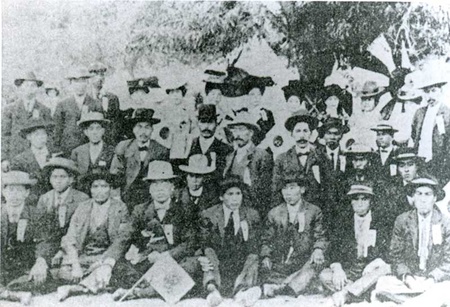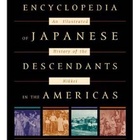On May 10, 1897, the first Japanese immigrants arrived in Mexico to start a coffee plantation in the state of Chiapas. Their venture eventually failed, but many of these immigrants married local women and established a base for future Japanese immigration to Mexico.
Unlike these early settlers, the Japanese who came to northern and central Mexico between 1901 and 1907 were mainly dekasegilaborers. They found contract work in mines, railroad, and farms through the services of emigration companies. The majority of these laborers used Mexico as a stepping-stone to re-migrate to the United States even after the entry of Japanese from Mexico was prohibited in March 1907.
The following decade ushered in the emergence of stable Nikkei communities in the northern states, as well as in Mexico City.

Early Japanese immigrants who worked at the mine of Kananea Company, Sonora, Mexico, ca. 1910s. (Collection of Asociación México Japonesa, A.C.)
World War II: Resettlement
With the outbreak of the Pacific War, all Japanese living in Baja California were ordered to move to Mexico City and Guadalajara in early 1942. Uprooted and disoriented, the resettlers were able to find housing and jobs with the assistance of the Kyoeikai (Comités de Ayuda Mutua, Committee of Mutual Aid) of Mexico City.

Takugoro Shibayama, pictured here with his family, was the head of Temixco farm, a collective agricultural enterprise that included about 450 Japanese who were forced to move from the border towns of Mexico. (Collection of Asociación México Japonesa, A.C.)
Shift from Agriculture to Urban Business
After the war, major shifts occurred within the Japanese Mexican community. Most of the Nikkei population remained concentrated in Mexico City and Guadalajara and their occupations shifted from agriculture to urban small businesses. Mexico became their permanent home.
The postwar Nikkei community experienced problems of factionalism and some degree of disunity, but after the mid-1950s, the Japanese Mexican Association played a vital role in bringing the community together to build a Nikkei cultural center and later the Mexican Japanese Institute under new Nisei leadership. Today, young Japanese Mexicans continue to build upon the legacy of their past while playing a more integral role in Mexico’s multicultural society.
Source:
Akemi Kikumura-Yano, ed., Encyclopedia of Japanese Descendants in the Americas: An Illustrated History of the Nikkei (Walnut Creek, Calif.: AltaMira Press, 2002), 203.
* Developed in collaboration with the Asociación México Japonesa, A.C.
© 2002 Japanese American National Museum






